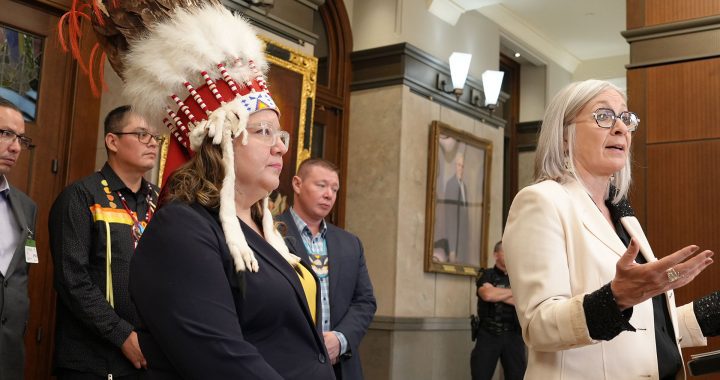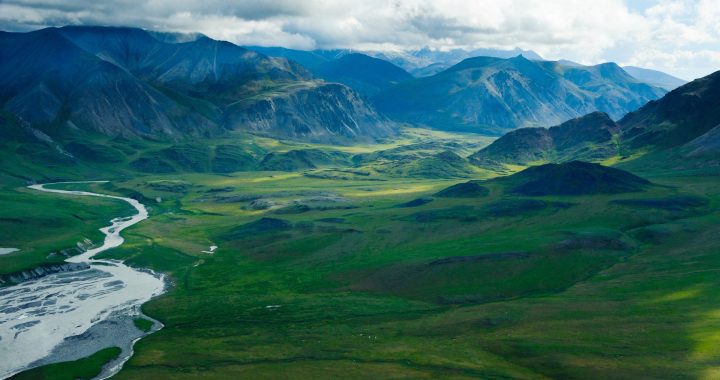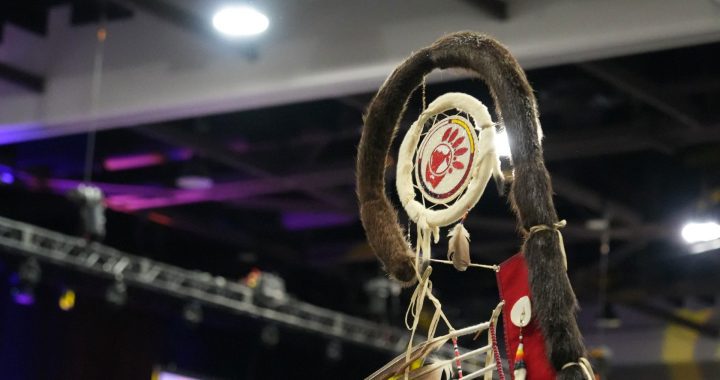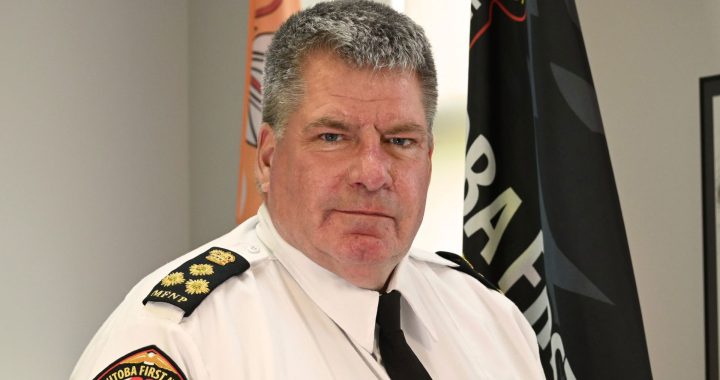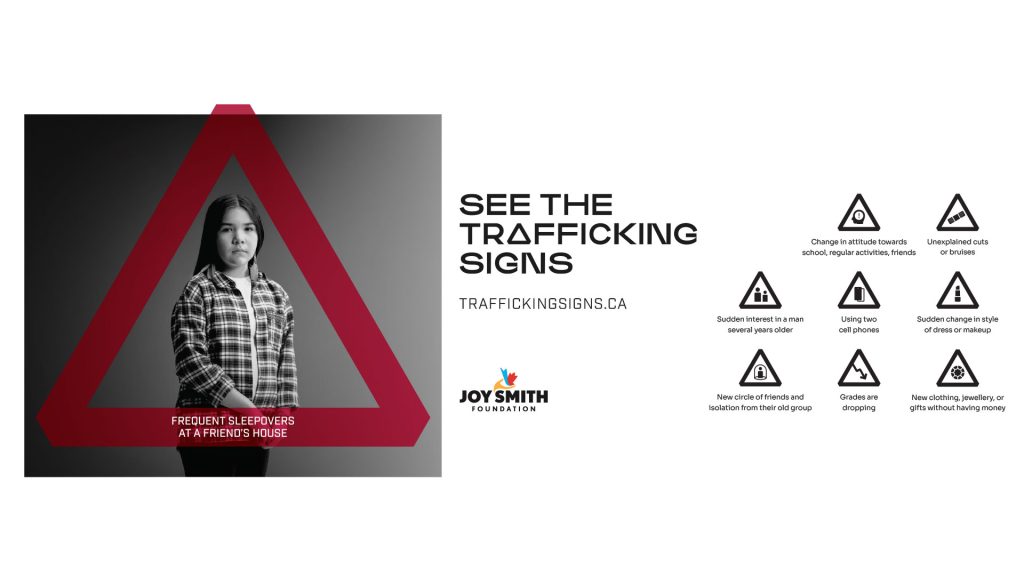
A poster about the warning signs of sex trafficking from The Joy Smith Foundation. Photo: TJSF
Police are applauding a security crackdown by Grassy Narrows First Nation after the northwestern Ontario band reported a spate of attempted abductions.
It happened over Christmas in the Ojibwe community, also known as Asubpeeschoseewagong Anishinabek, located 55 km northeast of Kenora, Ont.
The band reported “recent incidents involving attempted abductions of our band members” on Jan. 1 in an emergency bulletin posted to its private Facebook page.
Chief and council responded by establishing a checkpoint at the entrance to the community.
“Human trafficking is vile and evil,” said Emergency Response Coordinator Terry Fobister in the bulletin. “And it has come to put our people at risk.”
Fobister and Grassy Chief Sherry Ackabee didn’t respond to requests for comment on the alleged crimes.
But Treaty Three Police Service (T3PS) applauded the band’s action.
“T3PS acknowledges the recent concerns raised by Grassy Narrows First Nation regarding incidents that have led to the reinstatement of a community checkpoint,” it said in a Jan. 2 news release.
“We fully support the proactive measures taken by the Chief and Council to ensure the safety of their members.”
No one from T3PS was made available for comment.

In its release, the police service said it was working to stamp out “human trafficking, drug trafficking and organized crime” in the 28 First Nations it serves. T3PS territory spans west of Thunder Bay to north of Sioux Lookout to south along the international border and west into parts of Manitoba.
It said it employs a community sergeant in Grassy Narrows and using a video surveillance system to monitor and protect some communities.
Joy Smith, a former Winnipeg member of Parliament who helps trafficking victims through her Joy Smith Foundation, said Indigenous girls make up the majority of victims who are sexually exploited and trafficked in Canada.
“These girls are so vulnerable due to factors like poverty, addiction and involvement in the child welfare system,” she said in an interview.
Often, victims blame themselves. But Smith said they are being manipulated by predators who usually befriend them online and pretend to be sympathetic and supportive.
She said it is not unusual for traffickers to drive hundreds of kilometres to pick up “girlfriends” in Indigenous communities.
“A lot of our victims of human trafficking don’t even realize that they’ve been targeted,” said Smith, whose foundation has helped 8,000 victims, “and that they’re going to be bought and sold.”
Usually, victims are lured with generous promises that quickly become a “private hell”, she added, noting traffickers earn about $275,000 per victim annually.
Illegal drugs play a major role in trafficking, said Carol Hopkins, chief executive officer of the Thunderbird Partnership Foundation, which helps victims from an addiction and mental health perspective.
She said traffickers exploit victims’ existing addictions to coerce them into sex work, or ply them with drugs to keep them from escaping. Additionally, victims may rely on substances to cope with the trauma.
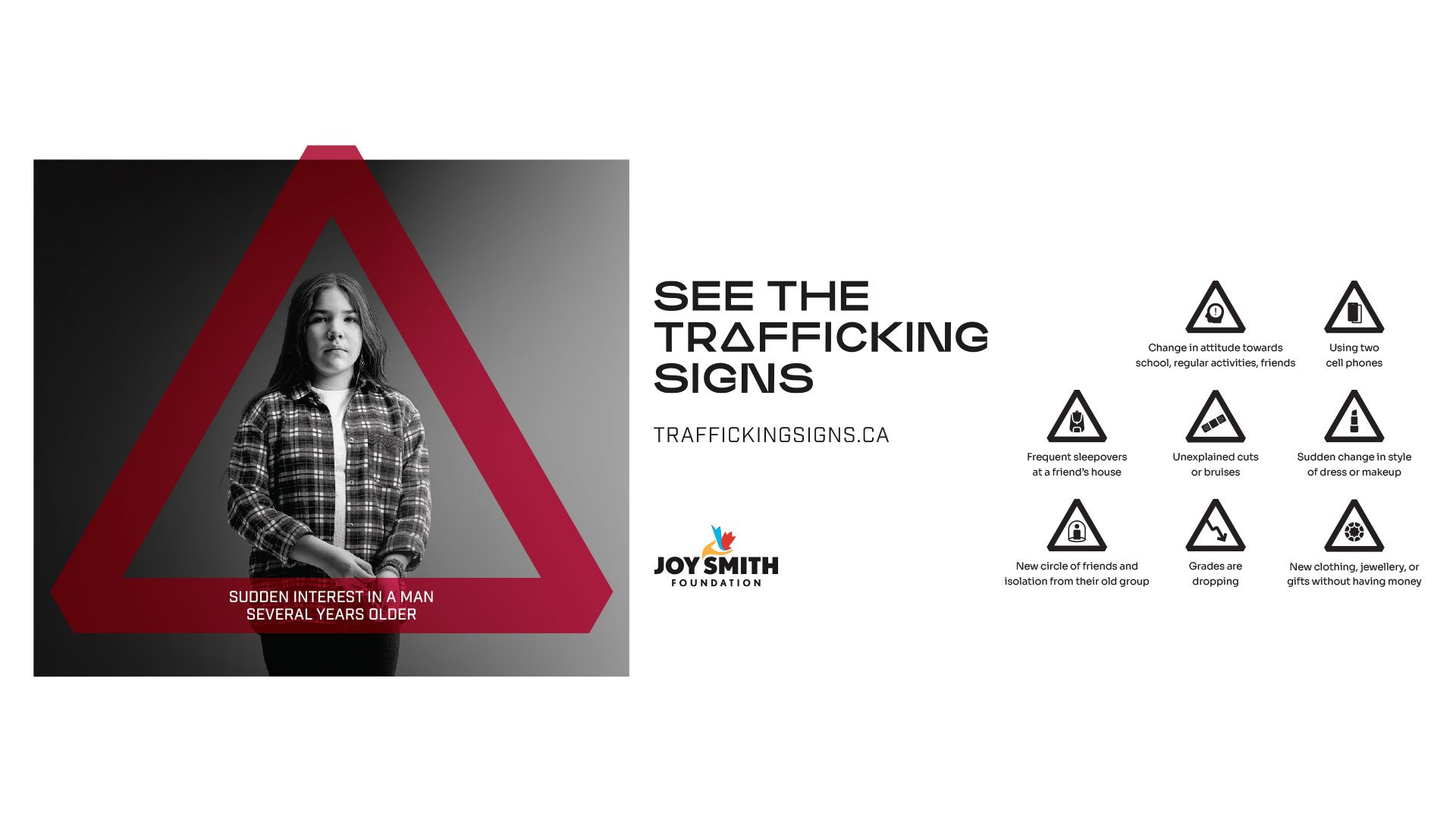
The Grassy Narrows bulletin advised community members to report suspicious activity and discuss the dangers of online predators with their children.
“Human trafficking is a complex and critical issue,” said the release, “and we are committed to continued collaboration, investigation, and education to protect our communities.”
National Chief Cindy Woodhouse Nepinak organized a panel on trafficking for the recent Assembly of First Nations convention in Ottawa.
“It’s happening right here in our own homeland,” Woodhouse Nepinak said in an interview. “So many of our women go missing.”
She asked Paul Brandt to discuss his anti-human trafficking initiative #NotInMyCity.
“It is a $150-billion-per-year industry globally,” Brandt said in an essay published in a Calgary newspaper.
“… The average age of first being trafficked in Canada is between 13 and 14 years old, though evidence of even younger ages exist. The greatest risk factor to being trafficked is simply being a girl.”
Being an Indigenous girl is even more dangerous, he added.
“… In Canada, Indigenous people make up a small amount of Canada’s population, but have high numbers of human trafficking victims. New Canadians are also at high risk in Canada.”
Brandt said “drug dependency, low self-esteem, housing insecurity, poor mental health, recent immigration status, natural disasters and war are all green lights for traffickers.”
The drug trade
Hopkins said traffickers usually infiltrate Indigenous communities through the drug trade.
“We always have people in our communities who are dependent on these substances. And when they can’t find a remedy to their pain and their suffering they move around, and they go to cities and towns in the hopes of finding an answer …
“And the most popular, friendly group,” she explained, “will be other individuals who are using substances and sometimes those individuals are attached to gangs.”
Hopkins said those “rings and networks” know First Nations people are transient and always go home.
“So now … those victims are coming home with individuals who may be involved in sex trafficking, human trafficking, sexual exploitation. And now that culture starts to take root in the community.”
For the addicted victims sex trafficking becomes a source of revenue for the drugs they need, she said.
But it brings guns, gangs and violence to their communities who are unable to combat it.
“So that’s the connection between substance use and human trafficking.”




